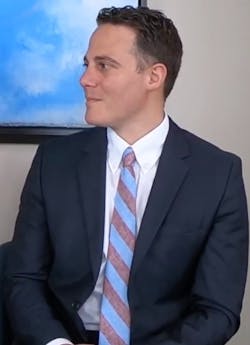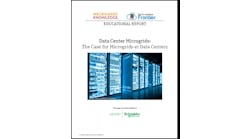Sacha Fontaine, energy solutions director at Siemens, defines distributed energy resource management systems (DERMS) and explains the value of DERMS to a utility or community. He also highlights the company’s projects in Puerto Rico and Illinois in an interview at Microgrid 2019 in San Diego with Elisa Wood, Microgrid Knowledge’s editor in chief.
DER (distributed energy resources). And DERMS (distributed energy resource management systems). These are two acronyms you should be very familiar with if your career has led you to the energy industry.
Fontaine explained that DERs can be renewable generation, battery storage, demand response, electric vehicles, or their chargers.
Distributed energy resource management systems are, of course, the management system that controls these resources.
“So it’s really a tertiary level software that’s able to have visibility and operational control of multiple types of generation and demand response,” Fontaine said.
So, what is the value of DERMS to a utility?
To explain, Fontaine took a step back and noted, that traditionally, from a utility point of view, a microgrid is a potential “loss of load.” The coordination challenges when reconnecting the microgrid to the larger grid can be intimidating. And there often simply isn’t enough visibility into how the microgrid works. DERMS works to mediate these challenges.
“With DERMS, you are getting visibility into the microgrid. The microgrid itself can quality as a DER, so therefore, the system is able to have integration and visibility and control all the way down to the microgrid controller, or even further into the generating asset,” Fontaine explained.
Siemens works on these types of projects regularly — one of the most recent in conjunction with Commonwealth Edison on the Bronzeville, Ill., microgrid cluster. This project includes two independent microgrids that work together to exchange energy based on hourly pricing bids. In other words, one microgrid is able to benefit from the assets of the other.
“The whole is better than the sum of its parts. And at the same time, they are still able to offer benefit to the overall grid,” said Fontaine.
“So it’s really a tertiary level software that’s able to have visibility and operational control of multiple types of generation and demand response.” — Sacha Fontaine, Siemens
For the Bronzeville clusters, one microgrid is designed for ITT (Illinois Institute of Technology), and the second is being built for the larger Bronzeville community.
“So, the benefit between those two is complementary in terms of load profiles,” he said. ITT uses energy during normal business hours, while the Bronzeville community exhibits a residential energy load profile with peaks at the beginning and end of the day — before work and after work.
The energy storage and generation capabilities of each of the clusters is designed to complement the other.
Siemens also is playing a large role to enhance the energy infrastructure in Puerto Rico, following the devastation of Hurricane Maria.
The Puerto Rico project, which includes rebuilding the island’s electrical infrastructure, is in its planning stages. Siemens and PREPA (The Puerto Rico Electric Power Authority) have proposed dividing the country into eight minigrids — large microgrids.
Fontaine pointed out that the minigrids will be able to act independently should a storm cause a power outage. They also will have the ability to cluster, in any combination, of two to eight. One could benefit from the assets of another and at the same time, still support the entire grid.
Applying DERMS to Puerto Rico’s system would enhance the project’s benefits for the community, the clusters, and the grid, Fontaine concluded.
Track microgrid news and trends as they emerge. Subscribe to the free Microgrid Knowledge newsletter.







